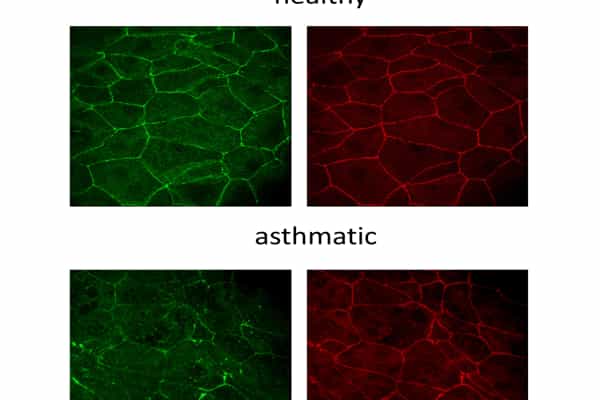Epithelial cells cover the majority of the human body’s inner and outer surfaces. This layer serves as a barrier against invaders such as bacteria, viruses, environmental toxins, pollutants, and allergens. Foreign substances, such as bacteria, can enter tissues through damaged or leaking skin or mucosal barriers, causing local, often chronic inflammation with direct and indirect consequences. Defective epithelial barriers have been linked to nearly 2 billion increases in allergic, autoimmune, neurodegenerative, and mental illness, according to new research.
Every day, humans are exposed to a wide range of toxins and chemicals. Many of these substances, according to the epithelial barrier hypothesis, cause damage to the epithelium, the thin layer of cells that covers the surface of our skin, lungs, and intestine. Epithelial barrier dysfunction has been linked to an increase in nearly two billion allergic, autoimmune, neurodegenerative, and psychiatric diseases.
Most of the human body’s internal and external surfaces are covered by epithelial cells. This barrier serves as a defense against invaders such as bacteria, viruses, environmental toxins, pollutants, and allergens. Foreign agents, such as bacteria, can enter the tissue and cause local, often chronic inflammation if the skin and mucosal barriers are damaged or leaky. This has both direct and indirect ramifications.
New studies have linked defective epithelial barriers to nearly 2 billion increases in allergic, autoimmune, neurodegenerative, and mental illness.
Chronic diseases due to defective epithelial barriers
Cezmi Akdis, Director of the Swiss Institute of Allergy and Asthma Research (SIAF), which is affiliated with the University of Zurich (UZH), has published a comprehensive review of epithelial barrier damage research in Nature Reviews Immunology. “The epithelial barrier hypothesis proposes that epithelial barrier damage is responsible for up to two billion chronic, non-infectious diseases,” explains Professor Akdis. Over the last two decades, researchers at the SIAF alone have published over 60 articles on how various substances damage the epithelial cells of various organs.
Rise in allergic and autoimmune conditions
The epithelial barrier hypothesis explains why allergies and autoimmune diseases have been on the rise for decades, linking them to industrialization, urbanization, and a westernized lifestyle. Toxins such as ozone, nanoparticles, microplastics, household cleaning agents, pesticides, enzymes, emulsifiers, fine dust, exhaust fumes, cigarette smoke, and countless chemicals are now present in the air, food, and water of many people. “Along with global warming and viral pandemics like COVID-19, these harmful substances are one of the greatest threats to humanity,” Akdis emphasizes.

Asthma, Alzheimer’s and more
Allergies, inflammatory bowel disorders, and celiac disease are all caused by local epithelial damage to the skin and mucosal barriers. However, disruptions in the epithelial barrier can be linked to a variety of other diseases characterized by changes in the microbiome. Either the immune system attacks “good” bacteria in healthy bodies incorrectly, or it targets pathogenic – i.e. “bad” – invaders. Leaky epithelial barriers and microbial imbalance in the gut play a role in the onset or progression of chronic autoimmune and metabolic diseases like diabetes, obesity, rheumatoid arthritis, multiple sclerosis, and ankylosing spondylitis.
Furthermore, damaged epithelial barriers have been linked to neurodegenerative and psychiatric diseases such as Parkinson’s disease, Alzheimer’s disease, autism spectrum disorders, and chronic depression, which may be triggered or exacerbated by distant inflammatory responses and changes in the gut microbiome.
Prevention, intervention and more research
“There is a strong need to continue research into the epithelial barrier in order to advance our understanding of molecular mechanisms and develop new approaches for prevention, early intervention, and therapy,” Akdis says. Novel therapeutic approaches could focus on enhancing tissue-specific barriers, inhibiting bacteria, or preventing pathogen colonization. Other disease-prevention strategies, such as targeted dietary measures, may involve the microbiome. Last but not least, emphasis must be placed on avoiding and reducing exposure to hazardous substances, as well as developing fewer toxic products.
Furthermore, defective epithelial barriers have been linked to neurodegeneration and psychiatric disorders such as Parkinson’s disease, Alzheimer’s disease, autism spectrum disorders, and chronic depression. This can be caused or exacerbated by distant inflammatory reactions and changes in the gut microbiota.
“We must continue to investigate epithelial barriers in order to better understand molecular mechanisms and develop new approaches for prevention, early intervention, and treatment,” Akdis said. New therapeutic approaches may focus on enhancing tissue-specific barriers, inhibiting bacteria, or preventing pathogen colonization. Other methods of reducing illness may include targeting the microbiome, such as through a specific diet. Last but not least, we must prioritize the avoidance and reduction of toxic substance exposure, as well as the development of fewer toxic products.













